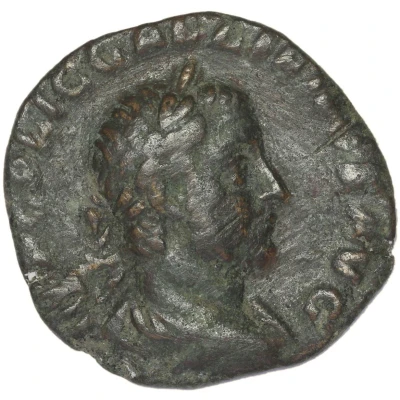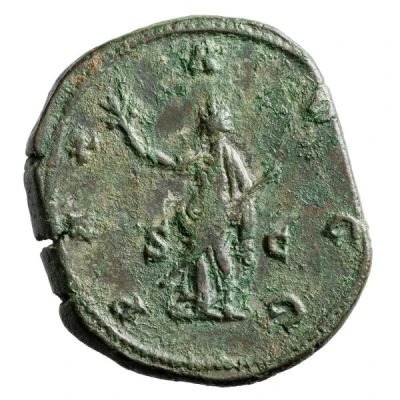


© Trustees of the British Museum
Sestertius - Gallienus SECVRITAS AVGG S C; Securitas
| Bronze | 16.5 g | 25.5 mm |
| Issuer | Rome › Roman Empire (27 BC - 395 AD) |
|---|---|
| Emperor | Gallienus (Publius Licinius Egnatius Gallienus) (253-268) Valerian (Publius Licinius Valerianus) (253-260) |
| Type | Standard circulation coin |
| Years | 253-258 |
| Value | Sestertius (⅛) |
| Currency | Antoninianus, Reform of Caracalla (AD 215 – 301) |
| Composition | Bronze |
| Weight | 16.5 g |
| Diameter | 25.5 mm |
| Shape | Round (irregular) |
| Technique | Hammered |
| Demonetized | Yes |
| Updated | 2024-10-05 |
| Numista | N#286858 |
|---|---|
| Rarity index | 100% |
Reverse
Securitas, draped, leaning on column, raising right hand and sometimes holding a sceptre in left hand.
Script: Latin
Lettering: SECVRITAS AVGG S C
Translation:
Securitas Duorum Augustorum. Senatus Consultum.
Safety of the two emperors (Augusti). Decree of the senate.
Comment
Mass varies: 12.71–18.43 g;Diameter varies: 25–26 mm;
Example of this type:
Trustees of the British Museum
Source:
Online Coins of the Roman Empire (OCRE)
Interesting fact
The Sestertius - Gallienus coin was used to promote the Roman Empire's military victories and ideals. One of the coin's inscriptions, "SECVRITAS AVGG S C," stands for "Securitas Augustorum," which means "Security of the Emperors." This suggests that the coin was used to promote the idea of a secure and stable Roman Empire, which was a key message of the Gallienus regime. Additionally, the coin's imagery, which includes a depiction of the goddess Securitas on the reverse, further reinforces this message of security and stability.

